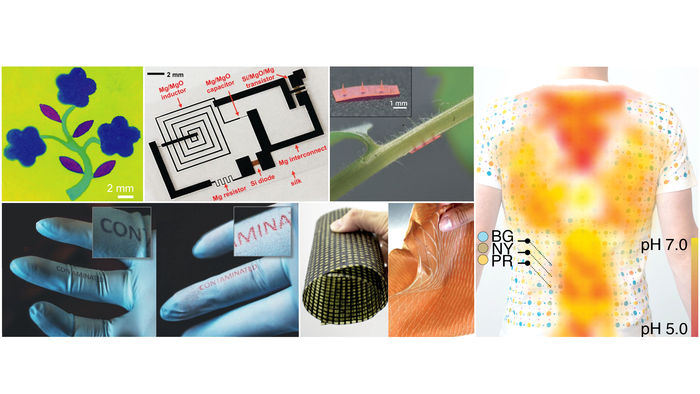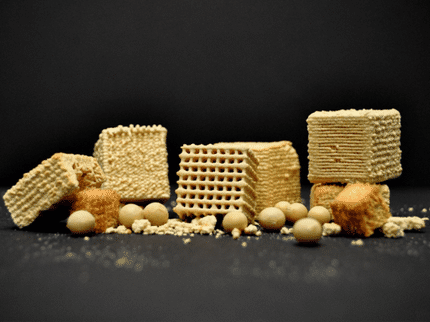Sustainable silk material for biomedical, optical, food supply applications
Silk's unique and versatile properties present many possibilities for future technologies
While silk is best known as a component in clothes and fabric, the material has plentiful uses, spanning biomedicine to environmental science. In Applied Physics Reviews, by AIP Publishing, researchers from Tufts University discuss the properties of silk and recent and future applications of the material.

Silk is used in nanopatterns, electronic devices, food sustainability, wearable sensors, bacterial contamination sensing, and additive manufacturing.
Giulia Guidetti et al.
Silk makes an important biomaterial, because it does not generate an immune response in humans and promotes the growth of cells. It has been used in drug delivery, and because the material is flexible and has favorable technological properties, it is ideal for wearable and implantable health monitoring sensors.
As an optically transparent and easily manipulated material at the nano- and microscale, silk is also useful in optics and electronics. It is used to develop diffractive optics, photonic crystals, and waveguides, among other devices.
More recently, silk has come to the forefront of sustainability research. The material is made in nature and can be reprocessed from recycled or discarded clothing and other textiles. The use of silk coatings may also reduce food waste, which is a significant component of the global carbon footprint.
"We are continuing to improve the integration between different disciplines," said author Giulia Guidetti. "For example, we can use silk as a biomedical device for drug delivery but also include an optical response in that same device. This same process could be used someday in the food supply chain. Imagine having a coating which preserves the food but also tells you when the food is spoiled."
Silk is versatile and often superior to more traditional materials, because it can be easily chemically modified and tuned for certain properties or assembled into a specific form depending on its final use. However, controlling and optimizing these aspects depends on understanding the material's origin.
The bottom-up assembly of silk by silkworms has been studied for a long time, but a full picture of its construction is still lacking. The team emphasized the importance of understanding these processes, because it could allow them to fabricate the material more effectively and with more control over the final function.
"One big challenge is that nature is very good at doing things, like making silk, but it covers an enormous dimensional parameter space," said author Fiorenzo Omenetto. "For technology, we want to make something with repeatability, which requires being able to control a process that has inherent variability and has been perfected over thousands of years."
The scientists hope to see more materials and devices use silk in the future, possibly as an integral component in sensors to obtain emergent data on humans and the environment.
Original publication
Other news from the department science

Get the food & beverage industry in your inbox
By submitting this form you agree that LUMITOS AG will send you the newsletter(s) selected above by email. Your data will not be passed on to third parties. Your data will be stored and processed in accordance with our data protection regulations. LUMITOS may contact you by email for the purpose of advertising or market and opinion surveys. You can revoke your consent at any time without giving reasons to LUMITOS AG, Ernst-Augustin-Str. 2, 12489 Berlin, Germany or by e-mail at revoke@lumitos.com with effect for the future. In addition, each email contains a link to unsubscribe from the corresponding newsletter.

















































